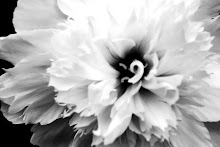When solving problems,
dig at the roots instead of just hacking at the leaves.
~Anthony J. D’Angelo
.jpg) |
| Wild Weeds. MJohnson © 2009. |
I’ve learned a lot about life by working in my yard. For instance, here in my mountain community great emphasis is placed on keeping things in their natural state. Aside from the main roads, very few surfaces are paved. Instead, roads and driveways are formed with packed sand and gravel.
Likewise, my back patio was designed to be gentle to the land, created from large slabs of flagstone that fit together like puzzle pieces with tiny pebbles in between, rather than grout or cement. The downside to this design reveals itself in the warmer months when I am faced with a mass of unruly weeds, awkwardly sprouting between the stones.
At first I went on a weed-pulling frenzy, bent over for hours as I pulled and tugged at the stalks of things I couldn’t define. After a while, my back hurt and my hands were tired, so I settled for the appearance of no weeds; I wanted to have my friends over for a fabulous party on the patio. At that point, I started grabbing handfuls of weeds, pulling wildly as I went for a quick-fix to the problem. A quick-fix it was not, for within two weeks those pesky weeds were back—thicker and stronger than ever—and, once again, I found myself slumped over for hours pulling them from the ground.
The next spring, older and wiser, I decided to take a different approach. Armed with a variety of earth-digging apparatus, I settled in for an afternoon of weed pulling, moving methodically between the stones, taking my time, digging deep into the earth to get to the root. It took me most of the day, but that season I only pulled weeds twice.
I thought it was a done deal. Imagine my surprise to see new weeds sprouting the next spring. My effort to get to the root wasn’t deep enough, and failed to take into account the many branching veins and structures supporting their unruly growth. This time, armed with an animal-friendly weed killer, I made a cocktail strong enough to take them all down, gently pouring the mixture between the stones in an effort to eradicate them forever. That year, I only pulled weeds once. Now it’s all about maintenance.
My experience with weeds—as difficult and frustrating as it was—gave me great insight into the depth of human nature and the truth of effective problem-solving. All of life, every creation, every problem, everything we think, say or do can be traced to the fundamental core from which it grew. When we ignore the root, we miss an opportunity for greater understanding, and without understanding we cannot possibly hope to solve the problem in a meaningful way.
So it is with social justice. When dealing with the great issues of our time, especially in this “day of the non-profit,” where giving is seen as fashionable among the “haves,” the first thing we should do is ask: What’s really going on here? Then start digging at the roots. That’s what many of the great charitable organizations are trying to do, often in tandem with offers of temporary relief.
But simply throwing money at a problem or attempting to lift people out of their problems without more—understanding why it persists or requiring some form of self-help from the receiver while sharing critical tools for future problem-solving (“teach a man to fish…”and such)—is no better than hacking at the leaves of pesky weeds.
Some criminal and civil justice systems have been examining their roots as well, evolving toward a more holistic approach to problem-solving, albeit slowly at times. Rather than moving forward in a strictly adversarial way, restorative justice is a unique approach to law—a social movement, really—that focuses on the needs of the victims, offenders and the communities affected by their actions; digging deep to uncover root issues and bring forth peaceful approaches to harm, problem-solving and violations of legal and human rights.
After all, if the root problem that led an offender to commit burglary is her drug addiction, simply throwing her in prison in an effort to punish and exact revenge does nothing to address the underlying issue of addiction and its psychological cousins. In this way, a restorative justice approach demands compassion—a willingness for those harmed to see beyond their anger and grief and cooperate in arriving at a peaceful solution that considers the safety and dignity of all—together with the offender’s commitment not only to repair the harm done, but to eradicate the root that led to the crime or civil malfeasance in the first place.
Examples abound; because in the end, everything has a root. So do we. And we must go there to understand what keeps us grounded—for good or ill—for it will determine much about the direction of our growth.
___________________________
By Melissa Johnson; © 2010. All rights reserved worldwide.
If you're having trouble viewing this by e-mail, click here "Heart Law" to be redirected to the blog home page.









.jpg)









.jpg)
.jpg)
.jpg)

.jpg)
.jpg)







.jpg)



